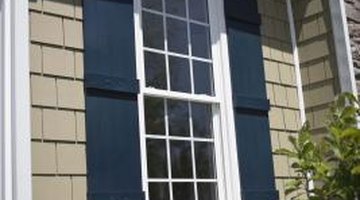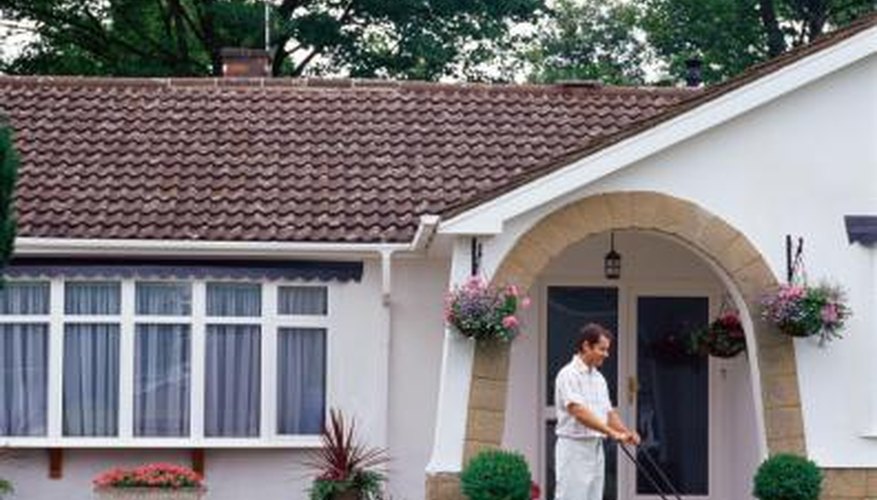Homes in the 1950s were built in what is called the "modern" style. In general, the 1950s was a time of clean lines and simple designs. However, modern architecture took on many forms, each of which has its own distinct features. Windows in the 1950s varied from bare-edged, metallic, and rectangular to multi-paned, wood-framed, and shuttered. These descriptions provide an overview of the most popular home styles and their windows during the mid-twentieth century.
Cape Cod

The Cape Cod style home -- small, uniform, and boxy -- has gone in and out of popularity a few times since its inception in the 17th century. The style was revived after World War II when soldiers returning from war needed affordable homes for their families. The Cape Cod homes of the 1950s have regular, vertical windows often separated into many panes, and almost always have shutters painted in a contrasting colour to the rest of the house. Windows are almost always arranged symmetrically and in rows.
- The Cape Cod style home -- small, uniform, and boxy -- has gone in and out of popularity a few times since its inception in the 17th century.
- The Cape Cod homes of the 1950s have regular, vertical windows often separated into many panes, and almost always have shutters painted in a contrasting colour to the rest of the house.
Craftsman
Craftsman, or "Arts and Crafts" homes, feature elements of a wood cabin. They feature natural elements and rustic appeal, but with clean lines and artful design. Craftsman-style windows often have many panes within each window. Both recessed and bay windows occur frequently on Craftsman-style homes. Window frames are wooden. Asymmetric window layouts are common.
- Craftsman, or "Arts and Crafts" homes, feature elements of a wood cabin.
- Craftsman-style windows often have many panes within each window.
Colonial Revival

Colonial Revival homes first sprang up after the United States' Centennial celebration in the late 1800s and the style continued to be used into the mid-1950s. Multi-pane, double-hung windows with shutters characterise the Colonial Revival home. Windows are almost always uniformly sized and symmetrical on each side of the home. This style is very similar to the Cape Cod style.
- Colonial Revival homes first sprang up after the United States' Centennial celebration in the late 1800s and the style continued to be used into the mid-1950s.
- This style is very similar to the Cape Cod style.
International

The International style refers to the straight edges and cubic shapes that grew in popularity in the 1950s and into the 1960s. This architectural form emphasises glances into the future, rather than reflecting on the past. International style windows are square or rectangular with no adornments, such as shutters, and usually have metal frames instead of wood, adding to the utilitarian look. International style homes have large single or double paned windows or long, narrow stretches of window divided vertically into many small panes, called "ribbon windows." Corner windows are also a distinctive feature of this style.
- The International style refers to the straight edges and cubic shapes that grew in popularity in the 1950s and into the 1960s.
- International style windows are square or rectangular with no adornments, such as shutters, and usually have metal frames instead of wood, adding to the utilitarian look.
Ranch
Ranch style homes abounded in the 1950s and were the most popular home plan for the middle class. Ranch style windows are often vertically or horizontally rectangular, and have wooden window frames. Many have shutters but more minimalist styles do not. The window sizes are regular, and the designs are simple and clean. Buildings and windows are often asymmetrical.
- Ranch style homes abounded in the 1950s and were the most popular home plan for the middle class.
- Ranch style windows are often vertically or horizontally rectangular, and have wooden window frames.
